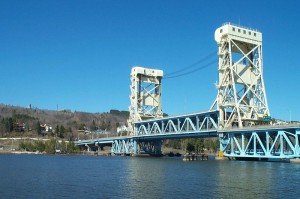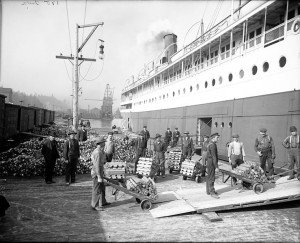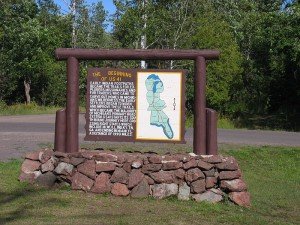Michigan’s beautiful Upper Peninsula is a summer paradise. The peninsula is surrounded by Lake Superior to the north and Lake Michigan to the south. The northern woods scenery is spectacular and a road trip through the Copper Country and the scenic routes through the western section of upper Michigan is a perfect addition to any vacation planner.
Thank you for reading this post, don't forget to subscribe!
Make special note of the Copper Harbor Scenic Highway. This is a 27 mile stretch of highway, U.S. Hwy 41, running from Phoenix Michigan to Copper Harbor on the Keweenaw Peninsula. Much of this scenic route was first traveled by the pioneers to the region. Today, it’s one of North America’s most scenic byways.
The western section of Michigan’s upper peninsula is steeped in the history of copper mining and iron ore mining. Michigan’s Keweenaw Peninsula is another small land area that represents the very northern tip of the upper peninsula. Stretching into blue lake Superior, the Keweenaw Peninsula itself is quite a historic site. The scenic byways through this peninsula are one of a kind.
Iron ore was found in Michigan’s upper peninsula about 1840 and copper was discovered in Michigan’s upper peninsula in 1841. Copper was to become a major export of Michigan. At first, the iron ore usage was fairly small, some being found in swamps and used in charcoal furnaces to produce pig iron. While the first deposits were small, beginning in 1844, iron ore was found in large deposits and the country started taking it more seriously. In fact, the U.S. thought it important enough to establish Fort Wilkens on the tip of the Keweenaw Peninsula to protect the resource. Fort Wilkens was no doubt one of the army’s more frigid outposts during the winter months. While quite a lot has been written about America’s wild western frontier, much less has been publicized about this part of Michigan which represented the northern frontier. As it turned out, the economic necessity of gaining access to and the transportation of iron ore would eventually lead to the construction of the Soo Locks on the eastern end of Michigan’s upper peninsula and would usher in the era of the Great Lakes ore carriers.

The Copper Harbor Scenic Highway is an all weather blacktopped roadway. While you drive this route you’ll be able to view an 1850’s era general store, a blacksmith shop, historic churches and ghost towns from the old mining boom days. A underground copper mine tour is also available. The Copper harbor Scenic Highway in upper Michigan offers motorists the chance to really see the heart of Michigan’s copper mining country. Another added Michigan vacation adventure while on the Keweenaw Peninsula is a ferry ride to the Isle Royale National Park. Isle Royale National Park is a rugged island in Lake Superior, northwest of Copper Harbor, with abundant wildlife. It’s very popular during the summer months with backpackers, hikers, boaters, kayakers, canoeists and scuba divers.
Visitors to Fort Wilkens will get a good idea of what it was like for the troops that manned this very northerly outpost. Having Lake Superior bordering both sides of the Keweenaw Peninsula, the weather, particularly during winter, could be trying. Tourist to the Fort Wilkens State Historical Park can take advantage of both camping and day use activities. It also features one of the very first lighthouses on Lake Superior. The Copper Harbor Lighthouse, a round tower built in 1848 and put into operation the following year, was replaced in 1866 by the current structure.There is a Copper Harbor excursion that starts out from the marina and includes a boat tour and a visit to the lighthouse museum. At Fort Wilkens, interpreters will explain the history of this Keweenaw Peninsula fort.

The Estivant Pines, a stand of virgin white pines, and The Delaware Mine, an old copper mine with guided tours, are located near the park. The Keweenaw Peninsula also offers a challenging nine hole golf course layout. Plenty of fun things to do and add to your Michigan vacation planner.
Two articles on scenic byways in the western U.S. are the Chief Joseph Scenic Byway just to the northeast of Yellowstone National Park and the Beartooth National Scenic Byway in Montana.
Anyone taking a summer vacation to northern Michigan will also pass by several other very scenic and historic sites. One of them of course is the Mackinaw Bridge which connects the upper and lower peninsulas of Michigan. Another is the fascinating Soo Locks at Saoult Ste.Marie Michigan on the border of Ontario Canada. The locks connect Lake Superior with Lake Huron and allows for the traffic between the two Great lakes. The Soo Locks were completed in 1855. It’s estimated that the Soo Locks handle about 10,000 vessels per year. Connecting the United States to Canada is the International Bridge which spans over the locks. The map below shows the location of Copper Harbor and the Keweenaw Peninsula.
(Photos are from the public domain)

